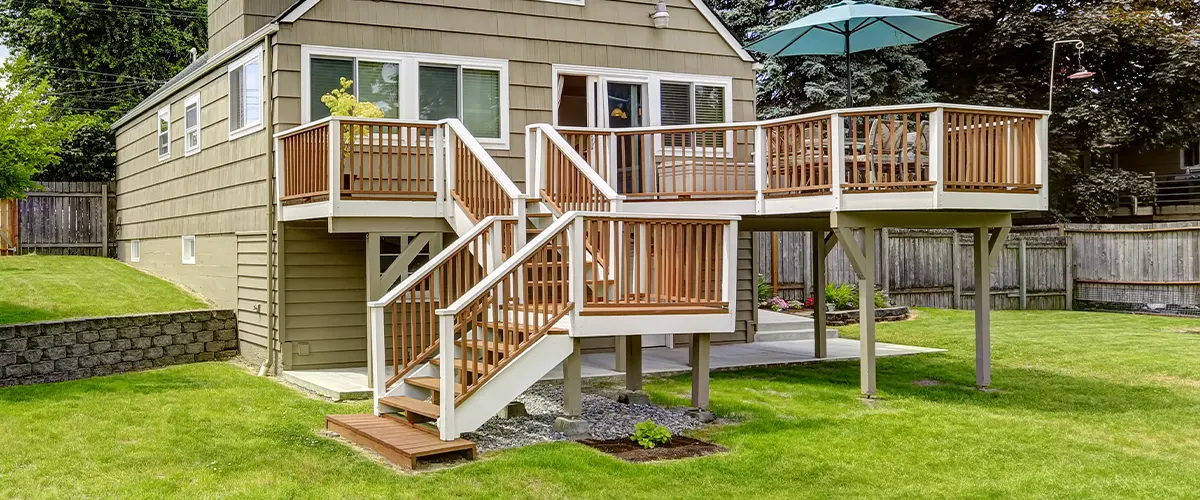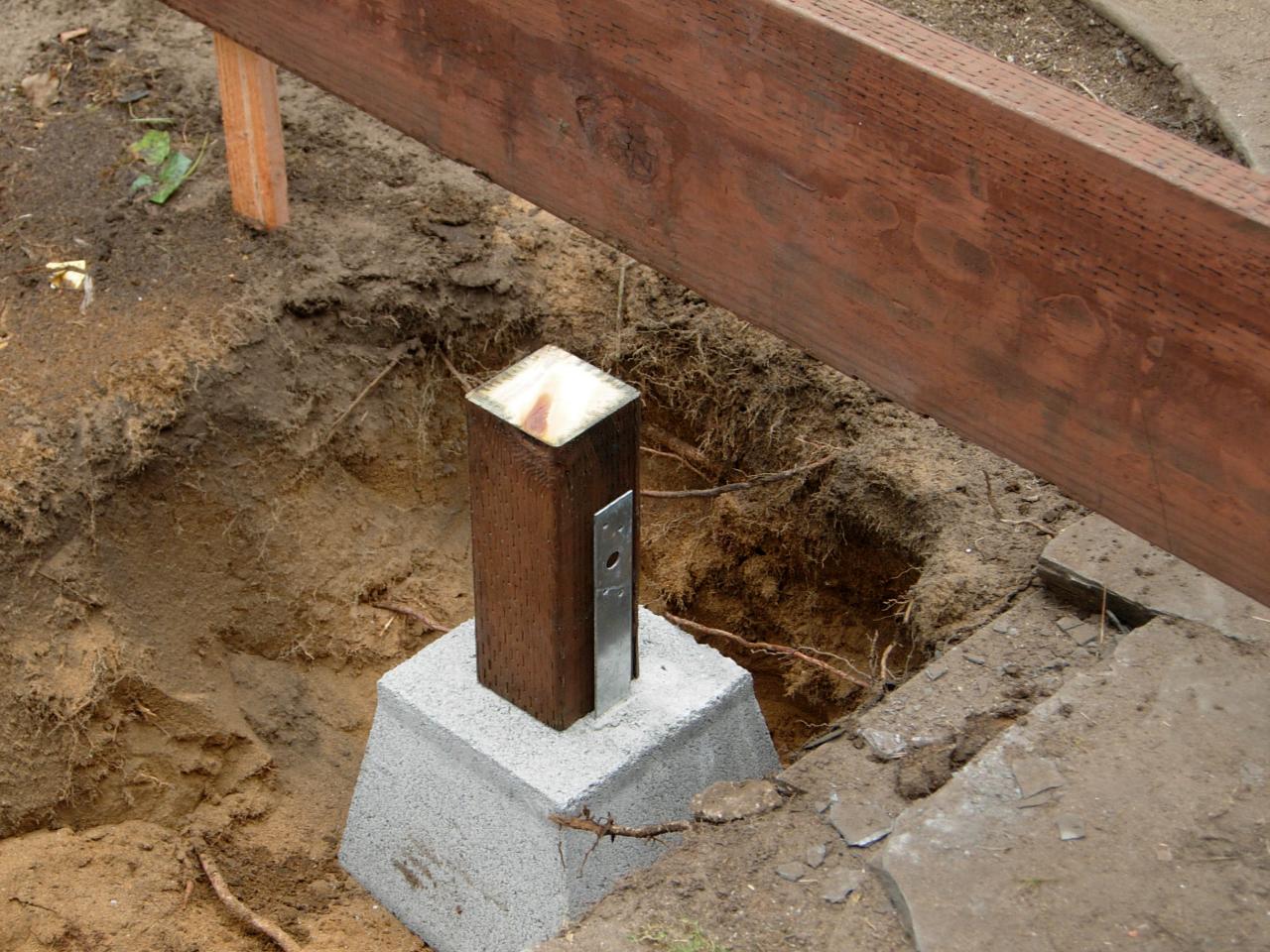Specialist Tips for Setting Up Deck Footings to Support Your Outdoor Room
When it pertains to constructing a deck, among one of the most essential components to consider is the installment of appropriate grounds. These grounds are the foundation upon which your exterior area will certainly rest, offering security and support for several years ahead. What specifically does it take to install deck grounds appropriately? In this discussion, we will discover professional ideas and strategies that can help make certain a sturdy and effective deck installment. From selecting the ideal sort of grounds to avoiding typical errors, we will give you with the expertise and understandings you require to with confidence start your deck-building trip. Allow's dive right in and discover the key to a solid and long-lasting exterior room.
Significance of Proper Deck Grounds
Proper deck grounds are vital for making certain the stability and durability of your exterior space. Without solid and effectively mounted grounds, your deck may become unstable, leading to safety and security risks and expensive repair services.

In addition to stability, proper deck grounds also add to the longevity of your exterior space (Deck Footings). Grounds that are created and constructed to hold up against the aspects and dirt conditions in your location will certainly aid stop the deck from moving or resolving in time. By guaranteeing the footings are correctly sized and installed, you can minimize the danger of damages to the deck structure, extending its life expectancy and decreasing the demand for costly repair services or replacements

Picking the Right Type of Grounds
When picking the proper kind of footings for your deck, it is essential to think about aspects such as soil problems, local building codes, and the overall layout of your exterior area. The kind of footing you choose will play a critical duty in making sure the security and longevity of your deck.
One usual kind of footing is the concrete footing. Concrete grounds appropriate for a lot of dirt conditions and supply exceptional support for decks. They are normally set up below the frost line to avoid moving and settling as a result of cold and thawing cycles. Another choice is helical piers, which are perfect for locations with unsteady dirt or high water tables. These piers are screwed right into the ground and supply solid support for the deck.
In many cases, you might need to utilize customized footings, such as heap footings or deep structures, if you are developing a big or multi-level deck. These footings are developed to disperse the weight of the deck over a larger area, guaranteeing security and avoiding sinking or working out.
Prior to picking a sort of footing, it is important to consult neighborhood structure codes and guidelines to ensure conformity. Additionally, consider the layout and planned use your outside space. Aspects such as the size, shape, and load-bearing needs of your deck will certainly influence the kind of footing that is most ideal.
Preparing the Ground for Footing Setup
To appropriately prepare the ground for footing setup, it is essential to analyze the dirt conditions and take required actions to make sure stability and longevity of the deck. The first step is to dig deep into the area where the grounds will certainly be mounted.
When the location has been dug deep into, the next action is to portable the soil. This can be done utilizing a plate compactor or by using a hand tamper. Condensing the dirt assists to get rid of any type of spaces or air pockets, which can bring about resolving and instability gradually.
After condensing the soil, it is necessary to lay a layer of crushed rock or crushed stone at the bottom of the excavation. This will certainly provide drainage and help to avoid water from merging around the grounds, which can lead to erosion and instability.
Step-by-Step Overview to Putting Up Deck Footings
After appropriately preparing the ground for footing installation, the following step is to begin the important link process of installing deck grounds. This step-by-step overview will offer you with a clear understanding of just how to mount deck grounds for your outside area.
Identify the area: Begin by noting the placements of the deck grounds using risks and string. Guarantee that the places straighten with the style and layout of your deck.
Dig the openings: Use an article opening digger or an auger to dig the holes for the grounds. The deepness and size of the holes should be in accordance with neighborhood building ordinance and the details needs of your deck style.
Degree the openings: Utilize a degree to ensure that the openings are dug to the correct deepness and are level with each other. (Deck Footings)
Add crushed rock: Area a layer of gravel at the bottom of each hole to enhance drainage and prevent the timber from deteriorating.
Put the footings: Place the grounds right into the holes, seeing to it they are degree and plumb. Make use of a degree and a measuring tape to ensure precision.
Safeguard the grounds: Pour concrete into the openings around the footings, loading them to the top. Make use of a post degree to guarantee the grounds continue to be degree as the concrete collections.
Permit time for treating: Let the concrete treatment according to the producer's guidelines before proceeding with the deck building.
Usual Blunders to Stay Clear Of Throughout Footing Installment
One crucial facet to take into consideration throughout the installment of deck grounds is preventing typical errors that can jeopardize the security and longevity of your outside space. While deck grounds may appear like a easy and straightforward part of the construction process, ignoring specific variables can bring about pricey repair work and possible security hazards down the line.

Additionally, neglecting to mount appropriate water drainage procedures can cause water to collect around the footings, causing rot, decay, and the eventual weakening of the deck's foundation. Using the incorrect type of footing material or falling short to sufficiently safeguard the footings can endanger their structural stability.
To stay clear of these blunders, it is vital to seek advice from an expert or follow industry guidelines to make sure correct footing installment. By doing so, you can ensure the security and long life of your exterior space, giving a delightful and secure setting for many years ahead.
Verdict
To conclude, mounting correct deck grounds is crucial for the security and durability of your outside area. By selecting the right kind of footings and adequately preparing the ground, you can make sure find out here a solid structure for your deck. Following a detailed guide and avoiding usual blunders during footing setup will certainly further boost the resilience and safety and security of your deck.
Appropriate deck grounds are essential for guaranteeing the security and durability of your exterior room. The footings serve as a link between the ground and the deck, permitting the weight of the deck and its passengers to be spread equally into the dirt.One common kind of ground is the concrete footing. Insert the footings: Place the footings into the openings, making sure they are level and plumb. Safeguard the grounds: Put concrete right into the openings around the footings, loading them to the top.